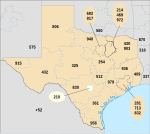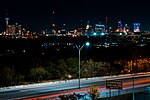Main and Military Plazas Historic District
Historic districts on the National Register of Historic Places in TexasNRHP infobox with nocatNational Register of Historic Places in San AntonioTexas Registered Historic Place stubs

Main and Military Plazas Historic District is a historic district in San Antonio, Texas. It was listed on the National Register of Historic Places in 1979, with a boundary increase in 2019.The area encompasses the old Presidio San Antonio de Béxar, where the Spanish troops and the military governor of Texas were stationed.It includes the following separately-listed Registered Historic Places, one or more of which are National Historic Landmarks: Spanish Governor's Palace, Vogel Belt Building Complex (restored for city offices), Church of Nuestra Señora de la Candelaria y Guadalupe, also known as the Cathedral of San Fernando Bexar County Courthouse
Excerpt from the Wikipedia article Main and Military Plazas Historic District (License: CC BY-SA 3.0, Authors, Images).Main and Military Plazas Historic District
Dolorosa Street, San Antonio
Geographical coordinates (GPS) Address Nearby Places Show on map
Geographical coordinates (GPS)
| Latitude | Longitude |
|---|---|
| N 29.424166666667 ° | E -98.493611111111 ° |
Address
Dolorosa Street 177
78205 San Antonio
Texas, United States
Open on Google Maps









